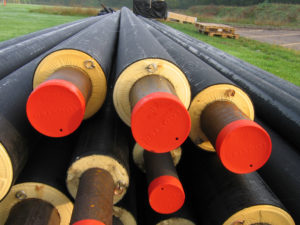
Heat networks should be regulated under the remit of an existing or new regulator, an industry alliance has told government.
A regulated approach could derisk investment in new heat networks and ensure consumer protections, according to the Heat Network Task Force.
The report spells out the key challenges for heat networks: Investors do not commit until heat customers are assured, but heat customers will not sign up until there is a viable proposition in front of them. Meanwhile risks of underperformance or stranded assets compound risk, driving up the cost of capital and therefore costs to consumers.
Moreover, consumers do not have the same protections as other regulated energy sectors, such as gas and power networks. If things go wrong, or they are held to ransom over prices, there is little recourse.
The task force, led by the Association for Decentralised Energy (ADE), appears open to an existing regulator taking on heat networks, or a new one being created.
That regulator would oversee a framework hinging around a proposal called ‘Demand Assurance’. This would allow developers to submit heat network plans to a regulator and, if approved, provide regulatory protection for some parts of the investment should heat customers fail to appear on time, or at all.
As a minimum, this protection for investors would cover the cost of capital for demand shortfall, the report suggests.
To receive those financial guarantees, heat networks would have to sign up to a set of minimum standards, including consumer protections around service and price.
Energy and clean growth minister, Claire Perry, welcomed the report’s “clear proposals on how to reduce investment risk and develop a market which provides strong protections for consumers”.
ADE director, Tim Rotheray hoped it would enable government and regulators “to build on current policy support to create a long-term sustainable investment market for heat networks”.
The report sets out how different elements of regulatory regimes might be incorporated into regulated heat networks, such as price controls, unbundling of generation, distribution and supply, customer protection and decarbonisation targets or instruments.
It also outlines the number of heat networks currently operational in the UK (around 17,000), how these may be decarbonised in the future in order to meet climate targets, and how heat networks and associated infrastructure could help balance the energy system.
Download the report here.
The Energyst is surveying readers for views on heat and how to decarbonise it. Please take our five minute survey here.
Related stories:
Lower carbon heat: Are we on the right path?
Investor Confidence Project seeks heat networks for funding and technical help
Enfield Council’s new heat network connects first customers
Centrica’s ENER-G: Flexibility and grid services will drive future revenues for CHP
CHP behind 6% of UK electricity, could do more
The heat is on, but which technologies will decarbonise heat at lowest cost?
Local Authorities must improve scoping to get heat networks funded
Heat networks ‘could be subsidy free within five years’ with right framework
Government ‘has heat network numbers wrong’
Waste heat a wasted opportunity
75p/kWh subsidies for district heating?
Decentralisation the key to heat networks?
Councils step up heat network plans
Local Authorities say finance and public procurement biggest barrier to heat networks
Heat Network Regulations: Messy delivery leaves landlords cold
Heat and light upgrades save two hospitals £7.5k/day
CHP unit earns £273 every hour for participating in balancing reserve
Quorn hopes CHP savings will be healthy and tasty
CHP system makes huge save for Newcastle United
Click here to see if you qualify for a free subscription to the print magazine, or to renew.
Follow us at @EnergystMedia. For regular bulletins, sign up for the free newsletter.



